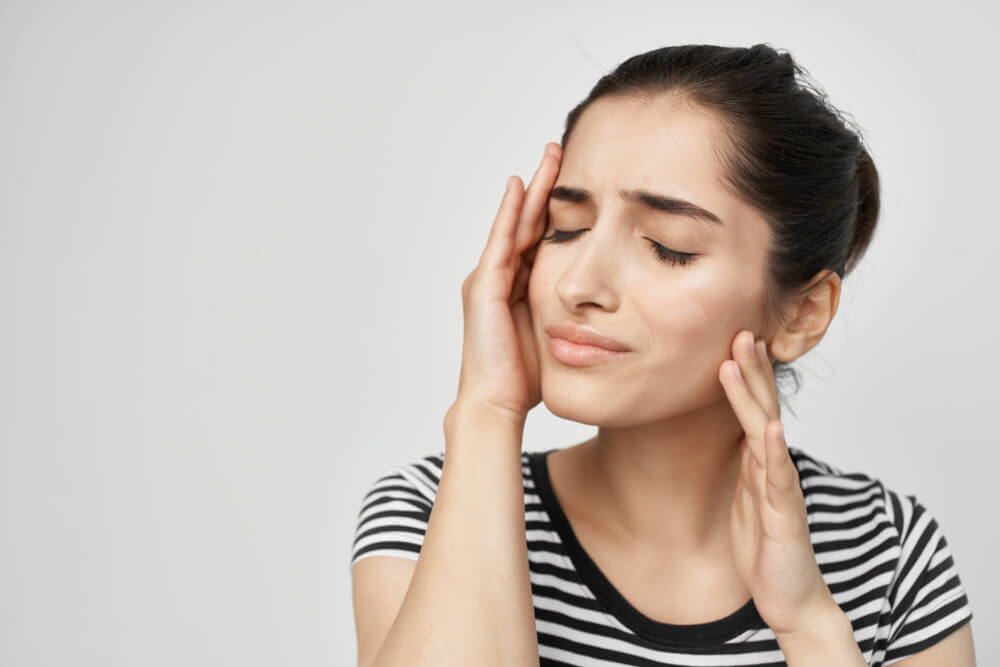It’s not uncommon to experience an ache in your neck every now and then, or maybe a bit of jaw pain if you eat something that has a hard texture. But if you’re experiencing neck and jaw pain at the same time, there might be a specific cause.
Your neck and jaw are connected, so it’s not uncommon for an issue in one to affect the other. Neck and jaw pain can interfere with your overall quality of life by making it difficult to carry out basic movements such as chewing your food or moving your neck from side to side. It’s important to determine the potential issue that’s causing your neck and jaw pain so that you can explore potential treatment options.
We’ll talk about the connection between neck and jaw pain, potential causes for the ache, and why physical therapy is a great treatment option.
How are neck and jaw pain connected?
Let’s start off by discussing how your neck and jaw affect one another. Your neck bone is connected to your jawbone through several muscle groups, but two of the main muscles that link them are the sternocleidomastoid muscle and the masseter muscles.
The sternocleidomastoid muscle is actually a group of over 20 pairs of muscles that assist in the rotation and flexion of your neck while indirectly affecting the function of your jaw. The masseter muscles are known as your chewing muscles and have counterparts in the neck.
Both neck pain and jaw pain are issues that are common for people to experience individually. Not only does neck pain affect 1 in 3 people once a year, but more than 10 million people in the U.S. experience jaw pain and dysfunction.
Neck and jaw pain will often occur alongside other symptoms, such as reduced range of motion.
3 causes of neck and jaw pain
Since your neck and jaw are closely linked, it’s possible that a condition in one will have a domino effect and cause pain in the other. By learning about the potential reasons for your neck and jaw pain, you can learn where the root of the ache is coming from so that it can be properly treated.
Here are three common causes of neck and jaw pain:
- TMJ disorders — Your temporomandibular joint works as a sliding hinge and connects your skull to your jawbone. One of the most common causes of jaw pain is TMJ disorders, affecting up to 12% of the general adult population. When this joint doesn’t function properly, it can cause pain in other areas of your body, including the neck, shoulders and head.
- Misalignment — If the joints in your jaw, neck and spine aren’t properly aligned, you may experience simultaneous neck and jaw pain. Misalignment is often caused by scoliosis as well as poor posture, such as overextending the neck while looking at your phone for an extended period of time.
- Bone spurs — It’s possible for bony growths to develop in your joints or spine, known as bone spurs. They are often caused by joint damage due to osteoarthritis. When bone spurs occur in the cervical spine, the spinal region in your neck, they’re called cervical osteophytes. They can cause both neck and jaw pain.
Treatment options for neck and jaw pain
The important thing to remember is that to alleviate neck and jaw pain, you have to focus on treating the core issue. For instance, if you’re experiencing bone spurs in your neck that’s causing pain in your jaw, alleviating the symptoms in your neck will eventually have a positive effect on your jaw.
There are several treatment options that are worth exploring for neck and jaw pain. While some can be completed at home with self-care, others may require the assistance of a health care professional.
Here are some treatment options for neck and jaw pain:
- Hot and cold therapy — For temporary pain relief, you can alternate between hot packs and ice packs on the main affected area. While the ice will help numb the area and decrease inflammation, the hot packs will help relax the muscles and improve circulation to accelerate the recovery process.
- Posture adjustment — Making gradual adjustments to your posture can decrease neck and jaw pain caused by misalignment. Poor posture can also contribute to TMJ dysfunction symptoms. A physical therapist can provide you with postural retraining to provide long-term improvement.
- Myofascial release — A common physical therapy technique for neck and TMJ dysfunction pain is myofascial release. Also known as trigger point therapy, this technique involves the therapist using their hands to gently apply pressure to specific trigger points.
Whatcom Physical Therapy can determine the issue behind your neck and jaw pain
If your neck and jaw are hurting at the same time, there’s a chance that the pain is connected. At Whatcom Physical Therapy, we will provide an evaluation of your symptoms to help determine the issue that’s causing simultaneous neck and jaw pain. From there, we’ll design a treatment plan that addresses the main issue.
Call us or request an appointment today and let’s work together to ease your neck and jaw pain.
